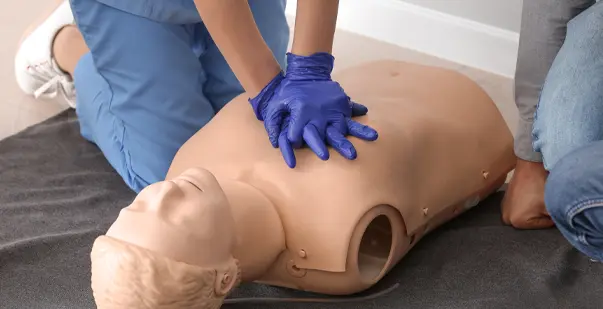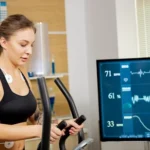Table Of Content(s)
- Introduction
- State the difference between BLS and ACLS
- Overview of BLS and ACLS course content
- Key Differences in Course Content
- Tips for choosing the right training programs: ACLS or BLS?
- Conclusion
If you’ve completed Advanced Cardiovascular Life Support (ACLS) training, your next question might be “does ACLS cover BLS?” It’s a common question, especially for healthcare professionals who are already well-versed in advanced life-saving techniques. The answer is more nuanced than a simple yes or no. A study revealed that while ACLS provides advanced techniques and interventions, basic life support forms the foundation of effective emergency response. BLS skills are crucial for initial patient assessment and basic interventions that form the first line of defense before advanced care is administered.
Imagine this: during a cardiac arrest, BLS skills such as high-quality chest compressions and proper ventilation are essential for stabilizing the patient until ACLS interventions like advanced airway management or medication can be used. Essentially, ACLS builds on the groundwork laid by BLS.
Let’s start with the key differences between ACLS and BLS
State the difference between BLS and ACLS
These are the key differences between Basic Life Support and Advanced Cardiovascular Life Support.
| Aspect | Basic Life Support (BLS) | Advanced Cardiovascular Life Support (ACLS) |
| Purpose | Provides fundamental life-saving skills for emergencies | Offers advanced techniques for managing complex cardiac emergencies |
| Focus | Basic patient assessment and immediate care | Advanced interventions for cardiac arrest and severe conditions |
| Scope of Practice | CPR, chest compressions, rescue breaths, and AED use | Advanced airway management, intravenous medication, and advanced cardiac monitoring |
| Certification Level | Entry-level certification | Advanced certification require prior BLS knowledge |
| Typical Scenarios | Sudden cardiac arrest, choking, and general emergencies | Severe arrhythmias, post-cardiac arrest care, and complex resuscitation scenarios |
| Training Duration | Shorter, typically around 4-6 hours | Longer, usually 12-16 hours |
| Course Content | Basic CPR techniques, AED use, and choking relief | Advanced cardiac rhythms, pharmacology, and emergency protocols |
| Who Should Take It | All healthcare providers, laypersons, and first responders | Healthcare professionals who manage advanced cardiovascular conditions |
| Skill Required | Basic knowledge and application of life-saving techniques | Advanced understanding of cardiovascular emergencies and treatment strategies |
Read More: Cardioversion and defibrillation Overview
Overview of BLS and ACLS Course Content
Understanding the content of Basic Life Support (BLS) and Advanced Cardiovascular Life Support (ACLS) courses is essential for anyone considering certification in these life-saving skills. Here’s a breakdown of what each course typically covers:
Basic Life Support (BLS) Course Content
- CPR for Adults, Children, and Infants
Training in high-quality chest compressions and rescue breaths for different age groups.
- Use of Automated External Defibrillator (AED)
Instruction on how to use an AED effectively during a cardiac emergency.
- Relief of Choking
Techniques for responding to airway obstructions in conscious and unconscious individuals.
- Team Dynamics
Basic principles of working as part of a team during resuscitation efforts.
- Two-Rescuer CPR
Coordinating CPR with another rescuer for more effective chest compressions and ventilation.
Advanced Cardiovascular Life Support (ACLS) Course Content
- Recognition and Management of Cardiac Arrest
Advanced protocols for identifying and treating cardiac arrest, including high-performance team dynamics.
- Airway Management
Techniques for securing and managing a patient’s airway, including advanced tools and methods.
- Pharmacology
Overview of medications used in cardiac emergencies, such as epinephrine, amiodarone, and others.
- Management of Acute Coronary Syndromes and Stroke
Strategies for early recognition and treatment of heart attacks and strokes to improve outcomes.
- ECG Interpretation
Training in reading and interpreting electrocardiograms (ECGs) to identify arrhythmias and other cardiac conditions.
- Post-Cardiac Arrest Care
Guidelines for managing patients after successful resuscitation, focusing on optimizing ventilation, circulation, and neurologic function.
- Megacode Simulation
Hands-on practice through simulated emergency scenarios to reinforce ACLS skills and decision-making under pressure.
Key Differences in Course Content
- BLS focuses on basic life-saving skills that can be applied by anyone, including laypersons and healthcare providers.
- ACLS builds on BLS skills but adds advanced techniques and protocols for healthcare professionals who deal with complex cardiovascular emergencies.
Tips For Choosing the Right Training Programs: ACLS or BLS?
Selecting the right training program for Basic Life Support (BLS) or Advanced Cardiovascular Life Support (ACLS) is crucial for your career and preparedness in emergency situations. Here are some tips to help you choose the best program:
1. Identify Your Needs
- Evaluate Your Role: If you are a healthcare provider or work in an emergency setting, ACLS may be necessary. BLS is essential for anyone, including laypersons, who might need to perform CPR or use an AED.
- Career Goals: Consider whether your current or future job requires BLS or ACLS certification. ACLS is often required for those in advanced healthcare roles.
2. Check Accreditation
- Choose an Accredited Program: Ensure that the training provider is accredited by recognized organizations. Accredited programs follow established guidelines and standards.
3. Course Content and Format
- Review the Curriculum: Look for programs that cover all necessary topics in depth. BLS should include CPR, AED use, and choking relief, while ACLS should cover advanced cardiac care, pharmacology, and ECG interpretation.
- Flexibility: Consider whether the program offers in-person, online, or hybrid courses. Online options can be convenient, but hands-on practice is crucial, especially for ACLS.
4. Instructor Qualifications
- Experienced Instructors: Opt for programs with qualified instructors who have practical experience in emergency care. Their insights and real-world knowledge can enhance your learning experience.
5. Practice Opportunities
- Hands-On Training: Ensure the program includes practical, hands-on training sessions. For BLS, this might involve practicing CPR on mannequins. For ACLS, look for programs that offer simulation scenarios.
6. Recertification Requirements
- Understand the Recertification Process: Check how often you’ll need to recertify and whether the training provider offers easy access to recertification courses. BLS typically requires renewal every two years, and the same goes for ACLS.
7. Class Size and Student Support
- Smaller Class Sizes: Smaller classes often mean more personalized attention from the instructor, which can improve your learning experience.
- Support Resources: Look for programs that offer additional resources, such as study guides, online materials, and customer support.
8. Cost and Scheduling
- Compare Costs: Prices can vary widely. Ensure that the cost of the course aligns with your budget and that it includes all necessary materials.
- Convenient Scheduling: Choose a program that fits your schedule. Many programs offer weekend or evening classes to accommodate working professionals.
Read More: ACLS vs. Emergency Medical Technician
Conclusion
In the world of healthcare, both BLS and ACLS play integral roles. While ACLS equips you with advanced tools and techniques for managing critical cardiac events, it’s built on the foundation of BLS skills. So, does ACLS cover BLS? Absolutely. BLS provides the building blocks that are crucial in the initial moments of a medical emergency. It’s about ensuring that you can confidently handle the basics before moving on to the more complex interventions that ACLS offers. Having both BLS and ACLS certifications means you’re not just prepared. You’re equipped to make a real difference when it matters most.






